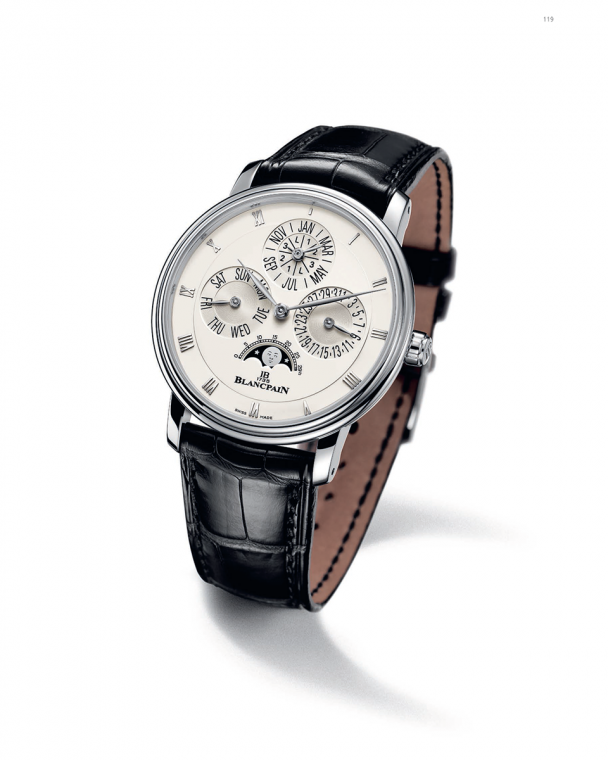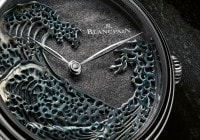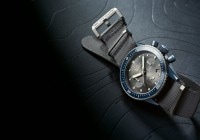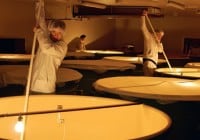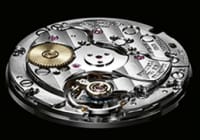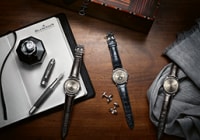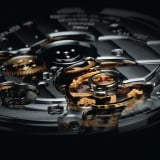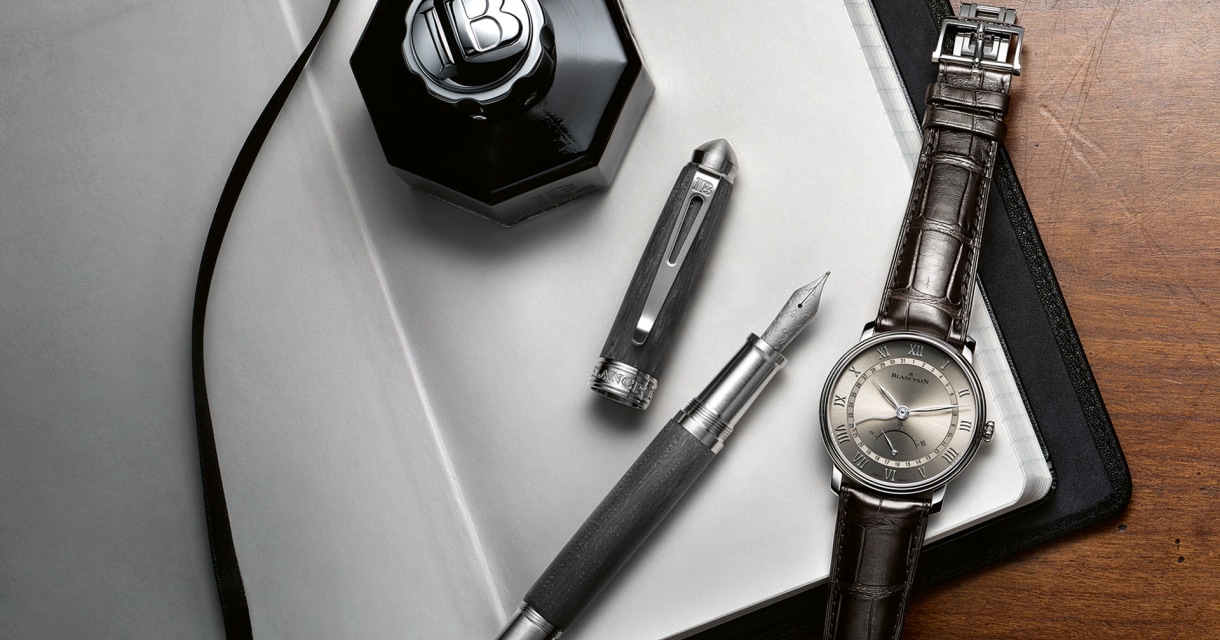
Search in Issues
Chapters
List of parts
Chapter 7
EVOLUTION
Blancpain’s reimagination of two mainstay movements.
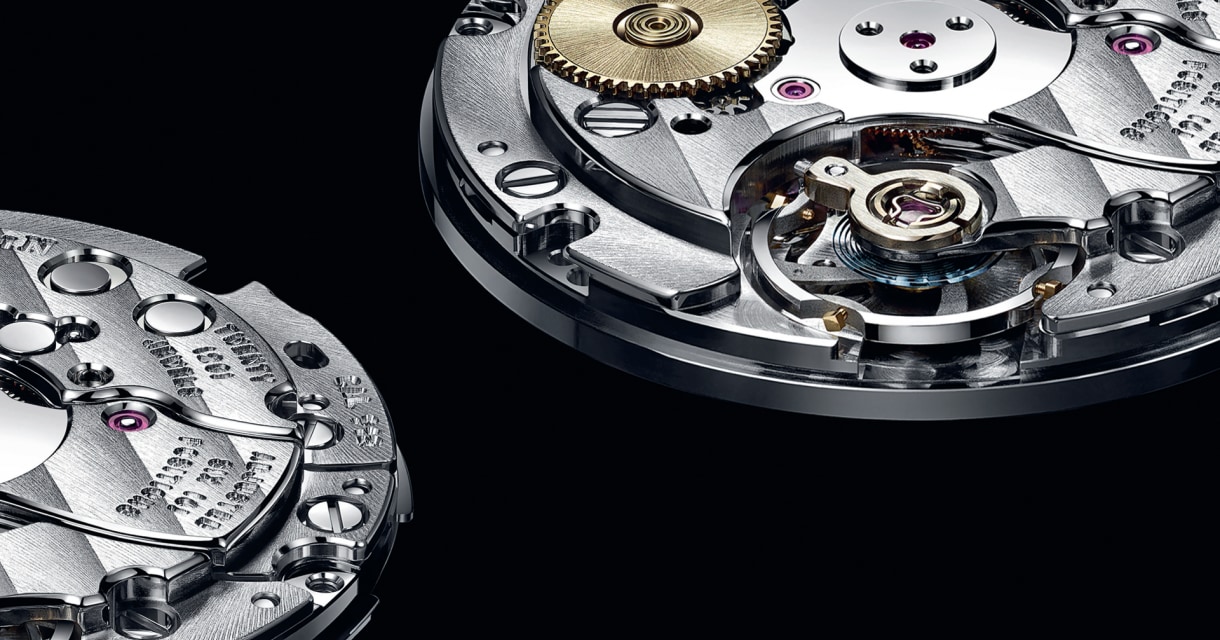
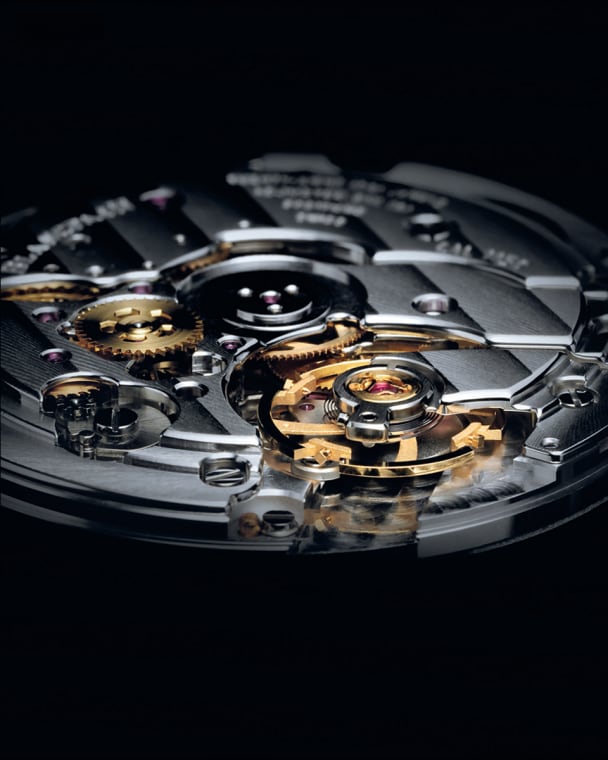
The same AMBITION which drove the creation of new movements lies behind the reexamination of two movements carried forward.
2006 was a landmark year for Blancpain. In front of a standing room only assembly of press, key retailers and selected Blancpain devotees, Marc A. Hayek presented the first new movement entirely developed under his leadership as CEO. With its three main spring barrels, titanium balance wheel fitted with gold screw inertial regulation, extra-large jewels and eight day power reserve and named the 13R0, this new caliber launched Blancpain down the path of groundbreaking movement innovation. Before long named the “Parade of New Movements”, the ensuing decade witnessed Blancpain rolling out no less than 35 entirely new next generation calibers.
Alongside these ambitious efforts, Blancpain has turned its sights on reexamining two movements which were slated to be carried forward: the women’s caliber 953 and men’s and women’s caliber 1150. The same ambition which drove the creation of the parade of new next generation calibers and which set design standards defined the work on these two updates.
The caliber 953, which with its 21 mm diameter has been a staple of the Blancpain women’s collection for many years, has undergone a multidimensional updating. Indeed, so many elements of its design have been revisited that the decision was made to rename it, calling it now the caliber 913. That said, the caliber 913, identical in size, has been conceived as a direct replacement and is destined to be used in the same watches as its predecessor 953.
No updates can be more fundamental than those directed toward the time keeping elements of the movement: the spiral, balance wheel, and regulation system. In common with all of the new movements introduced over the past ten years, the 913 has a free sprung balance with inertial regulation accomplished with gold screws. There are multiple advantages which come with this change. A few basics to understand this evolution in design. The central time keeping component for a mechanical watch is the balance wheel and a very finely coiled spring fitted inside it called the spiral. With each “tick” of the watch, the balance wheel receives an impulse which causes it to rotate. That rotation is controlled by the fine spiral, which after a certain number of degrees of rotation, usually in the neighborhood of 280 degrees, causes the balance wheel to reverse course and rotate in the opposite direction. The properties of the spiral and how it is attached are critical in determining how the balance wheel will oscillate back and forth. The timing of the back and forth oscillations, or balance wheel “swings”, determines the running rate of the watch. A free sprung balance, like the one in the new caliber 913, is one where the spiral is firmly attached at both ends.

Silicium hairsprings have been BROUGHT TO THE MOVEMENTS.
The alternative is one where the outside portion of the spiral is positioned by a raquette, which is a small movable arm that is fitted with two miniature pins, one on each side of the spiral. As the raquette is moved, the change in the position of the pins changes the effective length of the spiral, which alters the rate. To adjust the timing, the watchmaker applies delicate pressure on the raquette arm to move it, either to shorten or increase the effective length. As this description suggests, there is a slight degree of risk with a raquette system that a shock might move the raquette slightly and, thus, alter the running rate of the watch. The free sprung system of the 913 not only is more resistant to shocks since it has no raquette, but, as well, the fixed placement of the outer end of the spiral positions it more ideally so that its shape stays closer to the desired centered circle.
To regulate the timing, instead of moving a raquette and changing the effective length of the spiral, the watchmaker adjusts four gold regulation screws mounted on the balance wheel. By either screwing them inward or outward, the inertia of the wheel is changed thereby adjusting the rate. A good analogy is an ice skater’s spin. We have all seen Olympic ice skaters begin a spin with arms held outwards. As the arms are drawn inwards, reducing inertia, the spin speeds up. The same physics principle applies to the gold regulation screws. To increase the rate, the watchmaker turns the screws inwards; the reverse adjusts to a slower rate. And since the position is one determined by screws, immobile in the face of shocks, the resistance to shocks is much higher than with a raquette.
Blancpain has been in the vanguard in the adoption of silicium for its balance wheel spirals and its new movements now incorporate silicium for this vital component of the watch. In common with these other in-house movements and consistent with what has firmly been adopted as a Blancpain practice, the caliber 913 is fitted with a silicium spiral. For decades, Nivarox, a metallic alloy, established itself industry-wide as the standard material for spirals. Upon its introduction, Nivarox represented a mammoth technological advance which revolutionized watch performance. But that was the past. Silicium spirals similarly leapfrog forward, arguably to a much greater degree than Nivarox did over its predecessors.
The advantages of silicium over standard Nivarox are many.
First, silicium spirals are antimagnetic. This contrasts with the previous generation metallic spirals. In the past, if a spiral were subjected to a strong enough magnetic field, there was a risk that the fine coils of the spiral could become magnetized. When this occurs, adjacent sections of the spiral could either attract or repel each other, altering the properties of the spiral and, thus, the running rate of the watch. Silicium is not subject to this risk.
There are numerous ADVANTAGES OF SILICIUM as a hairspring material.
Second, silicium spirals can be fashioned into an idealized form. Many watch connoisseurs have come to understand that one of the advantages of silicium is that it can be produced to tighter tolerances than preexisting metallic spirals. That, of course, is true, but tells only half the story. Equally important as the tighter tolerances is the way in which the spiral can be made into shapes and profiles which are adjusted along its length. Consider for a moment the processes by which metallic spirals are fabricated. Strands of the metallic alloy are drawn until they achieve a very fine diameter. Thereafter, they are compressed until arriving at a thin rectangular profile and then wound into a spiral shape. There is no practical possibility for fabricating the spiral to create different properties along its length. Silicium on the other hand is fabricated from a solid wafer. Material is removed to yield a spiral. Since the amount of material removed can be customized according to the specifications given by the movement designers, the thickness can be varied along the length and/or the distance between the coils varied. Using computers, Blancpain’s movement designers, called constructeurs in watchmaking parlance, now calculate what is in effect an optimized profile for the spiral to enhance its performance in the movement in ways never before possible with preexisting metallic spirals.
Not only can the details of its shape and profile be idealized, the method of attaching the spiral to its axis can be perfected. In the past, spirals have been attached to the axis of the balance wheel with a collar. This method of attachment inevitably places the first inside turn of the coil a certain distance away from the center. Blancpain’s silicium spirals are formed with a patented triangular-shaped grip that enables closer winding of the innermost turn. This is important in addressing the manner in which the spiral will expand and contract as the balance wheel oscillates backwards and forwards. In general, watchmakers strive to have the spiral expand and contract (which romantically is often termed “breathing” since its winding and unwinding does resemble lungs inflating and deflating) uniformly and centered as closely as possible to the axis. Blancpain’s patented attachment aids in coming closer to this ideal.
One aspect of movement design that is addressed by watchmakers and movement designers is isochronism. Isochronism describes the way a watch behaves as the force from the main spring barrel drops. When a watch is fully wound, the force arriving from the barrel to the balance wheel is higher than when the barrel is nearly fully unwound. The response of a balance wheel equipped with a silicium spiral changes less with the drop in force than one with a traditional Nivarox spiral. This means that the running rate of the watch will be less affected as the barrel unwinds-superior isochronism performance-than with predecessor metallic spirals.
Weight is another property of silicium that yields benefits. In an ideal world, a balance spiral would be perfectly centered on its axis and breathe with perfect concentricity placing its center of gravity at all times on its axis of rotation. Unfortunately achieving that

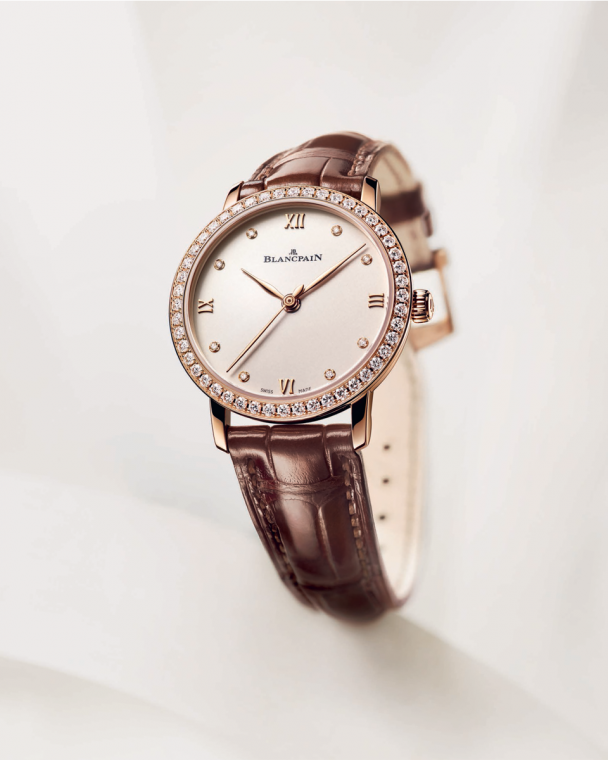
The caliber 913 replaces the IDENTICALLY sized 953.
ideal is not possible; to a certain degree, the center of gravity of the spiral will always be displaced somewhat from its center axis. This displacement contributes to rate errors when the watch is in a vertical position as the weight of the spiral can either increase or decrease the amount of the balance wheel’s swing (amplitude) as gravity acts upon the spiral. Movement designers call this “The Grossmann Effect”. Because a silicium spiral weighs substantially less than preexisting metallic spirals, these gravitational effects are reduced. What does this mean for the watch owner? Less variation in running rate as the position of the watch changes.
There is even one more advantage associated with the conversion to silicium for the spiral. Nivarox is a magnificent material which in its day was revolutionary. However, its properties can change with age. Silicium is more stable over time or, said another way, it does not age with the passage of time.
Silicium has been incorporated elsewhere for the regulating components, beyond the spiral. The escapement anchor, which is of classic Swiss lever escapement design, has been constructed with silicium bearings and with a silicium corne (the tip of the escapement that delivers the impulse to the balance wheel). Less friction and better wear performance lie at the heart of these improvements.
The 913 has been significantly improved over the identically sized 953 with a new design for the winding system. In the caliber 953, the winding system was constructed as a module consisting of the heavy gold automatic winding rotor, the winding gears attached to it, and a bridge carrying these components. For the 913, Blancpain’s movement designers were able to integrate the winding system into the movement itself, dispensing with a separate winding bridge. The improvements don’t stop there. The automatic winding rotor in 18 k gold now is fitted with ceramic ball bearings. Not only do these offer far superior resistance to wear, they require far less lubrication when compared to standard steel bearings. As well, the profile of the teeth in the gear train has been changed. The teeth now have a Pelton shape. There is great cleverness in the Pelton tooth profile as it enables efficient unidirectional winding. When the winding rotor turns in one direction, the Pelton teeth allow the rochet of the barrel to turn which winds the arbor of the main spring,
The caliber 1150 is a MAINSTAY of Blancpain’s movement repertoire.
at the same time the Pelton tooth profile blocks rotation of the rochet in the opposite direction, which would produce an unwanted unwinding.
One of the staples of Blancpain’s movement repertoire is the caliber 1150. When it debuted in 1992 (in the then Blancpain 2000 collection) not only was it one of the highest performance movements in the watch world, it started a trend that continues today. The 1150 was fitted with two main spring barrels which placed it at the top of the power reserve pyramid, for it achieved a running autonomy of 100 hours. This was at a time when the norm for an automatic winding movement was between 40 and 48 hours. Since that time, others in the industry have followed seeking solutions to increase movement power reserves. Still, for its time and today, the 1150 with its multibarrel design remains a leader and it is used extensively in both Blancpain’s men’s and women’s collections and is, as well, the “motor” for many of Blancpain’s complications, including the ultracomplicated Villeret Équation du Temps Marchante (Running Equation of Time).
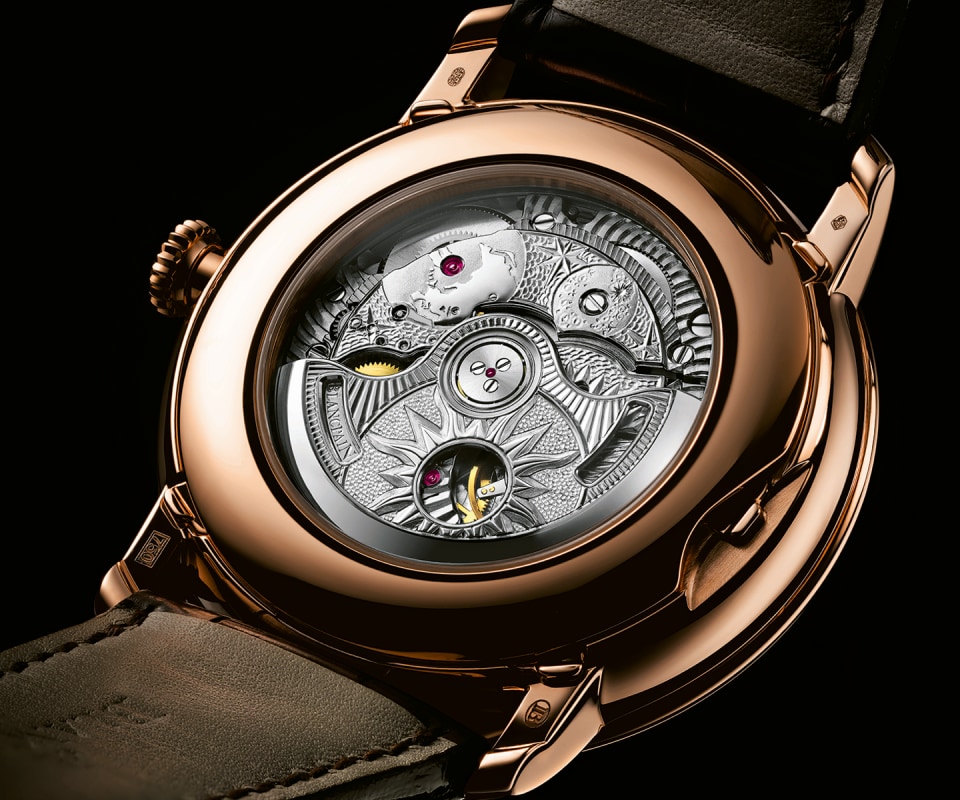
The 2014 revision of the 1150 is the fifth SIGNIFICANT REVISION.
Over the intervening years since its debut, Blancpain has bestowed numerous improvements to what is now this classic caliber with significant revisions coming in 1996, 2001, 2009, 2013 and 2014. In total, apart from its basic layout, all of the key components have been modified and updated. Had these changes been done at one time, certainly the name of the caliber would have been changed as was the case with the evolution of the caliber 953 into today’s caliber 913. But as these changes came gradually and were spread out over time, the name remains the same: 1150.
Consider the catalog of enhancements to the 1150. Like the 913, the balance wheel has been changed from raquette regulation to inertial regulation. The spiral is now fashioned in silicium with all of the advantages that material offers. The anchor now features a silicium corne.
Moving to the opposite end of the power train, the two barrels now house a main spring made of a special patented alloy. This change not only helps guarantee the power reserve, but the drop in torque delivered from the barrel as it unwinds comes later in time than with the predecessor spring.
In between the barrel and balance wheel there have been changes as well. Blancpain has changed the material used for the wheels in the gear train. In common with the state of the industry when the 1150 debuted in 1992, the gear train wheels were brass. Blancpain has been in the vanguard in its use of copper beryllium for its wheels. More expensive, copper beryllium is harder than traditional brass and offers superior wear properties. The 1150 now features copper beryllium wheels which, in addition to the change in material, bear Blancpain’s à jante design which enhances rigidity.
For watch connoisseurs all of these changes merit considering these enhanced movements as entirely new calibers, adding to the total of 35 new movements in the decade following the introduction of the 13R0 in 2006. Substance over form brings the same conclusion, even if Blancpain’s official “counting” method has not added changes, even major ones, to the total.
